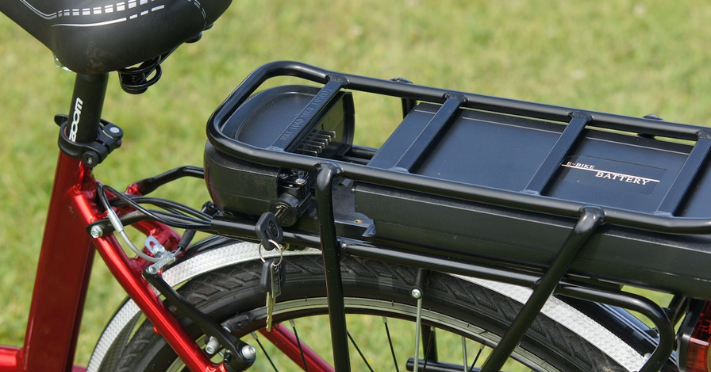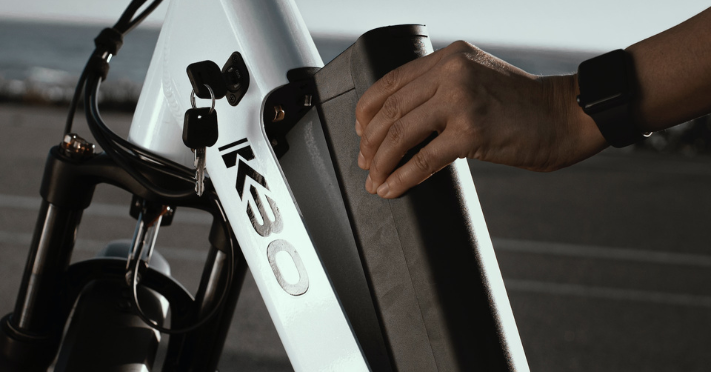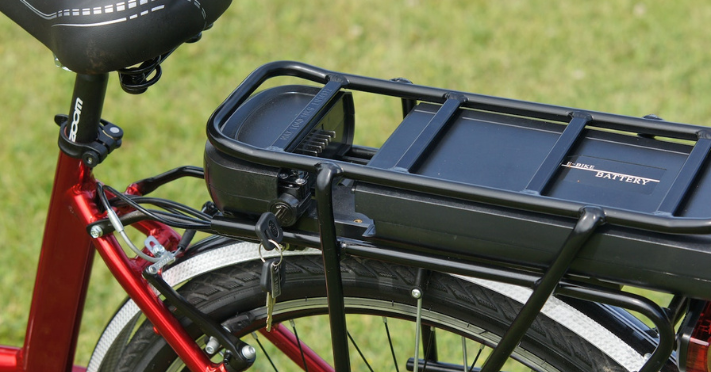In the world of e-bike ownership, proper battery maintenance is key to ensuring optimal performance and longevity. Whether you’re a seasoned rider or just starting out, our step-by-step guide is designed to be your go-to resource for all your battery maintenance needs. Packed with easy-to-follow instructions and expert advice, we’ll show you how to keep your e-bike battery in top shape. From recommended cleaning solutions to must-have tools, we’ve got you covered. Remember, a well-maintained battery not only improves your e-bike’s performance but also extends its lifespan. So, whether you’re a daily commuter, off-road enthusiast, or weekend adventurer, let us help you keep your e-bike powered up and ready for your next ride.
E-Bike Battery Inspection

Importance of regular inspection
As an e-bike owner, regular battery inspection is crucial to ensure optimal performance and longevity of your electric bike. Inspecting your battery regularly allows you to catch any potential issues early on and address them before they become major problems. By incorporating battery inspection into your maintenance routine, you can avoid unexpected battery failures and prolong the overall lifespan of your e-bike.
Visual inspection
Start by visually inspecting your e-bike battery for any physical damage or signs of wear. Check for cracks, dents, or any abnormalities on the battery casing. It’s also important to inspect the battery terminals for any corrosion or loose connections. If you notice any damage or corrosion, it may be necessary to seek professional help or replace the battery.
Checking for loose cables
Ensure that all cables connected to the battery are securely fastened. Loose cables can cause power interruptions or even damage to the battery. Carefully inspect all cable connections, making sure they are tight and properly seated in their respective ports. If you find any loose cables, gently tighten them to ensure a secure connection.
Inspecting the battery housing
Take a close look at the battery housing for any signs of moisture or water damage. Moisture can seep into the battery housing and cause internal damage, so it’s important to identify and address it promptly. Additionally, make sure the battery housing is clean and free from any dirt or debris that may have accumulated during your rides. Regularly cleaning the battery housing will help prevent contamination and potential issues.
Cleaning the Battery
Preparing the cleaning area
Before cleaning the battery, it’s important to prepare a suitable cleaning area. Find a clean and well-ventilated space where you can safely work on the battery without any obstructions. Place a soft cloth or towel on the work surface to prevent any scratches or damage to the battery during cleaning.
Using the correct cleaning solution
To clean the battery safely, make sure to use a cleaning solution specifically designed for e-bike batteries. Avoid using harsh chemicals or abrasive cleaners that may damage the battery or its components. Follow the manufacturer’s instructions and dilute the cleaning solution as recommended.
Cleaning the battery
Dampen a soft cloth or sponge with the diluted cleaning solution and gently wipe the battery casing. Pay attention to any areas that may have accumulated dirt or grime. Take care not to let any moisture or cleaning solution enter the battery housing or any openings on the battery. Thoroughly clean all visible surfaces of the battery, including the terminals and cables.
Drying the battery
After cleaning, ensure that the battery is completely dry before reattaching it to your e-bike. Use a separate, dry cloth to remove any excess moisture from the battery casing, terminals, and cables. Allow the battery to air dry for a sufficient amount of time, ensuring that there is no moisture remaining before reinstallation.
Charging the Battery

Understanding the charging process
Understanding how to properly charge your e-bike battery is essential for maintaining its overall performance and lifespan. Familiarize yourself with the charging process specific to your battery model by referring to the manufacturer’s guidelines. This will ensure that you can charge your battery correctly without overcharging or undercharging.
Using the correct charger
Always use the charger provided by the e-bike manufacturer or a charger recommended for your specific battery model. Using an incompatible or lower-quality charger can lead to improper charging and potential damage to the battery. If you need to replace a charger, be sure to choose one that matches the voltage and specifications of your battery.
Ensuring proper voltage
Before connecting the charger to your battery, double-check that the voltage settings are correct. Incorrect voltage settings can lead to overcharging or undercharging, which can negatively impact the battery’s performance and longevity. Make it a habit to verify the voltage settings on both the charger and battery before initiating the charging process.
Charging duration
To ensure optimal battery performance, it’s important to charge your e-bike battery for the recommended duration. Follow the manufacturer’s guidelines regarding the charging time and avoid exceeding the recommended duration. Overcharging the battery can lead to overheating and reduced battery life. It’s also essential to avoid charging the battery for too short a duration, as undercharging can affect the overall battery capacity.

Avoiding overcharging
Overcharging is a common issue that can significantly impact the lifespan of your e-bike battery. To avoid overcharging, it’s a good practice to remove the battery from the charger as soon as it reaches its full capacity. Leaving the battery on the charger for extended periods can cause excessive heat buildup and stress the battery, leading to premature degradation.
Storing the Battery
Preparing for storage
If you plan to store your e-bike battery for an extended period, it’s important to properly prepare it to maintain its performance during the storage period. Begin by charging the battery to around 50-70% of its capacity. This charging level is optimal for long-term storage and helps prevent the battery from self-discharging completely.
Choosing the right storage location
Selecting the right storage location is crucial to ensure the safety and longevity of your e-bike battery. Choose a cool and dry area away from direct sunlight and extreme temperatures. Avoid storing the battery in locations susceptible to moisture or humidity, as this can damage the battery’s internal components. Ideally, store the battery in a stable and well-ventilated space.
Maintenance during storage
While the battery is in storage, it’s essential to periodically check on it and maintain its condition. Every few months, inspect the battery for any signs of damage, corrosion, or swelling. If you notice any abnormalities, it’s crucial to take immediate action and seek professional assistance if necessary. Additionally, ensure that the storage area remains clean and free from any potential contaminants that may affect the battery.
Battery Usage Tips

Avoiding extreme temperatures
Extreme temperatures, both hot and cold, can have a detrimental effect on the performance and lifespan of your e-bike battery. Whenever possible, avoid exposing your battery to temperature extremes. If you live in an area with extremely high or low temperatures, consider storing your e-bike in a climate-controlled environment to minimize temperature-related stress on the battery.
Proper handling and transportation
When handling or transporting your e-bike battery, always prioritize safety and take precautions to prevent physical damage. Avoid dropping or subjecting the battery to any impact that may cause internal damage. When transporting the battery, use a sturdy and secure container to prevent any jostling or movement. It’s also advisable to remove the battery from the e-bike if you anticipate rough transportation conditions.
Optimal charging frequency
Finding the optimal charging frequency for your e-bike battery can help maintain its overall health and performance. Generally, it’s recommended to charge your battery after each ride or when the battery level drops to around 20-30%. Frequent charging within this range helps prevent deep discharges and ensures that the battery remains in good condition.
Avoiding deep discharges
Deep discharges occur when the battery is completely or almost completely depleted before recharging. These deep cycles can have a negative impact on the battery’s overall capacity and lifespan. To avoid deep discharges, try to charge your battery before it reaches a critically low level. Regularly monitor the battery’s charge level during rides and charge it as soon as it drops to a certain threshold.

Using the battery power modes efficiently
Most e-bikes come with different power modes that allow you to adjust the level of assistance provided by the motor. To optimize your battery usage, use the power modes efficiently. Consider using lower power modes when riding on flat terrain or when you have enough battery capacity. Reserve higher power modes for hills or when you need an extra boost. By using the power modes strategically, you can conserve battery power and extend your e-bike’s range.
Battery Capacity and Range Optimization
Understanding battery capacity
Battery capacity refers to the amount of energy a battery can store and provide to the motor. It is typically measured in watt-hours (Wh) or ampere-hours (Ah). Understanding your e-bike battery’s capacity is essential for determining its range and planning your rides. Higher capacity batteries generally provide longer range, but it’s important to note that other factors can affect the actual range.
Factors affecting battery range
Several factors can impact your e-bike battery’s range, even if you have a high-capacity battery. Factors such as terrain, rider weight, wind resistance, speed, and power mode selection can all influence the battery’s range. Riding on hilly terrain, using higher power modes frequently, or riding at high speeds can result in reduced range. To maximize your battery range, consider these factors and adjust your riding style accordingly.
Tips for maximizing battery range
To get the most out of your e-bike battery’s range, consider implementing the following tips:
-
Plan your routes: Take into account the terrain and distance when planning your rides. Avoid unnecessarily hilly routes or extensive detours that may drain the battery quickly.
-
Ride in eco-friendly power modes: Opt for lower power modes when possible, especially when riding on flat terrain or at a steady pace. This helps conserve energy and extend your battery range.
-
Maintain proper tire pressure: Keeping your tires properly inflated reduces rolling resistance, making it easier for the motor to propel the bike. This can have a positive impact on the battery’s range.
-
Minimize wind resistance: Riding against strong headwinds can significantly reduce your battery range. Whenever possible, try to ride in areas with minimal wind resistance or use windbreaks strategically.
-
Consider pedal-assist: Utilizing the pedal-assist feature of your e-bike can help conserve battery power. By actively pedaling while the motor provides assistance, you can reduce the strain on the battery and extend its range.
Identifying Battery Issues
Signs of battery degradation
Over time, e-bike batteries can experience degradation, resulting in reduced performance and capacity. Some common signs of battery degradation include:
-
Reduced range: If you notice a significant decrease in your e-bike’s range compared to when the battery was new, it could be a sign of battery degradation.
-
Increased charging time: If your battery takes longer to charge than it did previously, it may indicate a loss of capacity.
-
Inconsistent power output: If you experience fluctuations in power or notice decreased assistance from the motor, it may be a result of battery degradation.
Common battery problems
In addition to general degradation, e-bike batteries can encounter various specific issues. Some common battery problems include:
-
Cell imbalance: Imbalanced cells can lead to uneven charging and discharge rates, resulting in reduced overall battery performance.
-
Thermal runaway: This occurs when a battery overheats, potentially leading to dangerous situations or damage to the battery.
-
Internal short circuits: Short circuits within the battery can negatively impact its performance and lead to potential safety hazards.
Troubleshooting steps
If you encounter any issues with your e-bike battery, it’s important to address them promptly. While some problems can be resolved through troubleshooting, others may require professional assistance. If you experience any significant battery issues, follow these steps:
-
Consult the manufacturer’s manual: Refer to the manufacturer’s manual for specific troubleshooting instructions or recommended steps to address the problem.
-
Perform basic troubleshooting: Check all cable connections, ensure the charger and settings are correct, and inspect for any visible damage or loose components.
-
Seek professional help if necessary: If the issue persists or if you are unsure about how to resolve it, contact a professional service center or the manufacturer for further assistance. They will have the knowledge and expertise to diagnose and repair any complex battery problems.
Professional Battery Servicing
When to seek professional help
While many battery-related tasks can be performed at home, certain issues may require professional help. It’s advisable to seek professional assistance for the following:
-
Advanced troubleshooting: If you encounter complex battery issues or are unsure about how to resolve them, it’s best to consult a professional.
-
Battery repairs: If your e-bike battery requires repairs or component replacements, professional technicians with specialized knowledge and tools can ensure the job is done correctly.
-
Battery upgrades: If you’re considering upgrading your e-bike battery to a higher capacity or more advanced model, consulting a professional can provide valuable guidance and help you make an informed decision.
Finding a reliable service center
When seeking professional battery servicing, it’s important to find a reliable and reputable service center. Consider the following factors when selecting a service center:
-
Experience and expertise: Look for a service center that specializes in e-bike battery maintenance and repairs. A center with experienced technicians will be better equipped to handle a wide range of battery-related issues.
-
Customer reviews and reputation: Read customer reviews and testimonials to gauge the quality of service provided by the center. A center with positive reviews and a strong reputation is more likely to deliver satisfactory results.
-
Warranty and guarantees: Inquire about any warranties or guarantees offered by the service center. A reputable center will stand behind their work and provide assurances for the services rendered.
Battery service and maintenance packages
Many service centers offer battery service and maintenance packages tailored specifically for e-bike batteries. These packages often include regular inspections, cleaning, and performance optimization to ensure your battery remains in optimal condition. Consider opting for a service package that aligns with your maintenance needs and budget. Regular professional servicing can help prolong the lifespan of your battery and keep your e-bike performing at its best.
Recommended Tools for Battery Maintenance
Essential tools for DIY maintenance
If you prefer to perform basic battery maintenance at home, consider having the following essential tools:
-
Soft cloths or sponges: These are essential for cleaning the battery casing and other surfaces.
-
Cleaning solution: Use a specialized cleaning solution designed for e-bike batteries to ensure safe and effective cleaning.
-
Screwdriver set: A set of screwdrivers with different sizes and types can come in handy when inspecting or tightening battery connections.
-
Multimeter: A multimeter allows you to measure voltage and diagnose electrical issues with your battery.
Specialized cleaning tools
In addition to the essential tools, certain specialized cleaning tools can enhance the efficiency of your battery cleaning routine. These include:
-
Battery cleaning brush: A battery cleaning brush with soft bristles can help remove stubborn dirt or grime from hard-to-reach areas of the battery casing.
-
Compressed air canister: Using compressed air can help blow away dust or debris from intricate parts of the battery without causing damage.
-
Battery terminal brush: A battery terminal brush is designed specifically for cleaning battery terminals and removing corrosion buildup.
Battery diagnostic devices
For more advanced battery maintenance and troubleshooting, consider investing in battery diagnostic devices. These devices can provide detailed information about your battery’s performance and health. Some common battery diagnostic devices include:
-
Battery analyzers: Battery analyzers provide accurate readings of battery capacity, voltage, and other performance metrics. They help assess the overall condition and health of your battery.
-
Battery load testers: Load testers simulate real-world load conditions on the battery to assess its performance under different scenarios. These devices can help identify the capacity and efficiency of your battery.
-
Battery voltage meters: Voltage meters measure the voltage output of your battery and can help diagnose issues such as low voltage or fluctuations.
Conclusion
Maintaining your e-bike battery is a crucial aspect of responsible e-bike ownership. Regular inspections, cleaning, and proper charging practices contribute to optimal performance and longevity of your battery. By following the step-by-step guide outlined in this article, you can ensure that your e-bike battery remains in excellent condition, delivering optimal performance and providing many enjoyable rides ahead. Remember to always prioritize safety and seek professional help when necessary to address any complex battery issues. With proper maintenance, your e-bike battery will continue to power your adventures for years to come.




